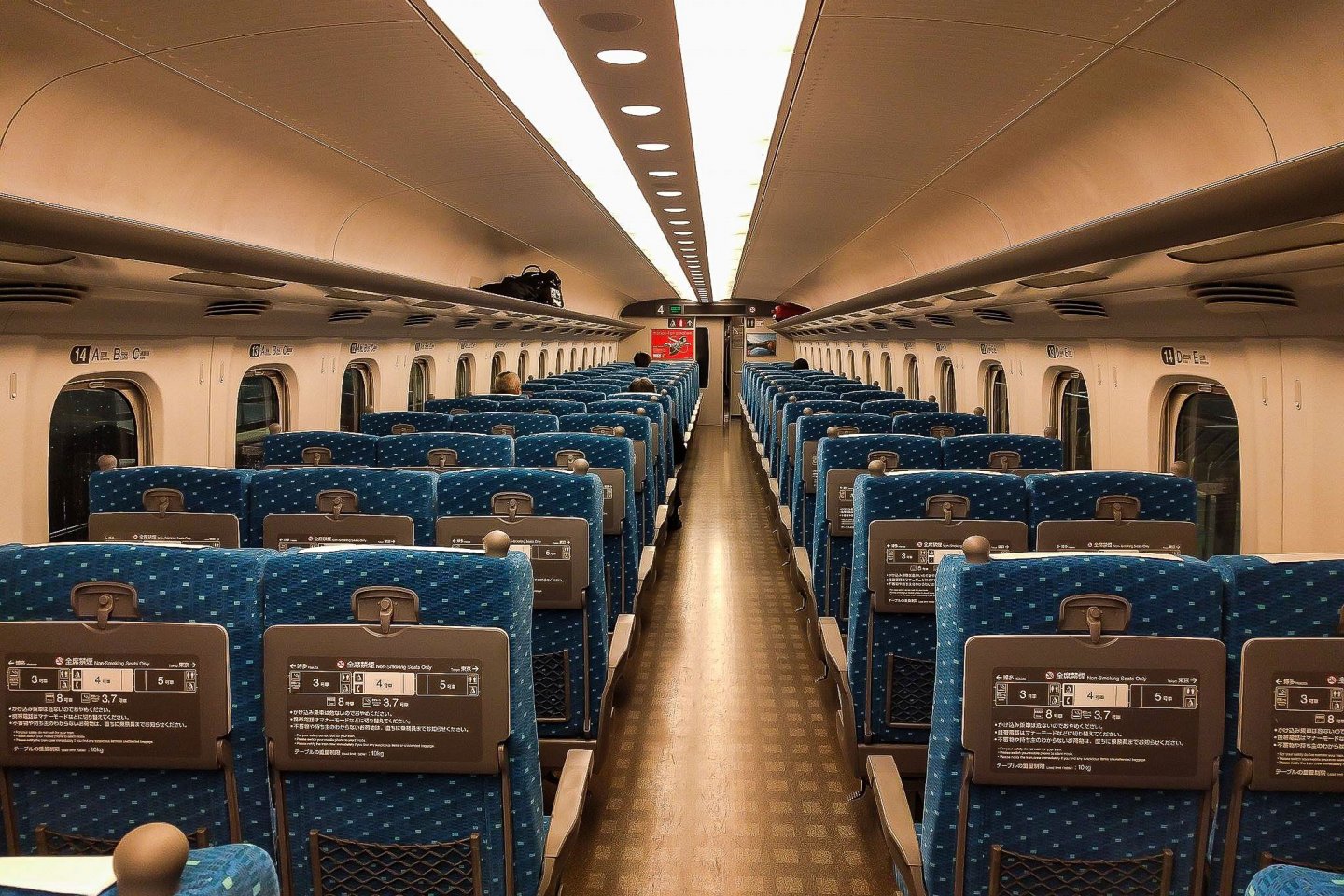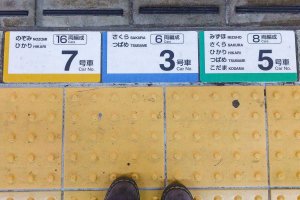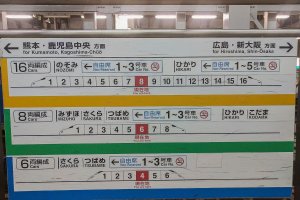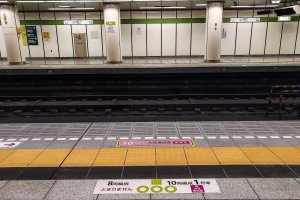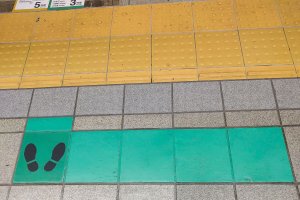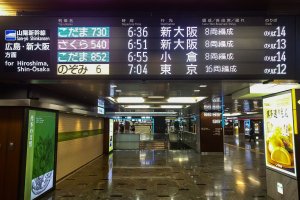Trains are the main mode of transport here in Japan. They will take you from A to B via C and loop round to D if required. The systems in place to facilitate the public transport system take some getting used to. However they are worth it as everything is on time.
The first few times you catch trains in Japan, everything is a little hectic. Radar noises reminiscent of those used to detect aliens in old sci-fi flicks notify passengers of approaching trains and when the doors are closing. Herds of people with places to be are entering and exiting the train and loud announcements from railway staff that you cannot understand are circling in your head. If you already have your train strategy under control when this all starts to unfold you will feel better about the entire experience. Here are some of my tips to save your time and sanity.
1. Carriage numbers.
If you have reserved a seat on a train you need to find the carriage number listed on your ticket. Otherwise you need to locate the non-reserved carriages as listed in tip 2.
Some trains such as the Sakura are always smaller than the Nozomi. Therefore, carriage 7 on the Nozomi doesn't correlate to carriage 7 on the Sakura and you would be standing at the wrong spot. To work this out you need to find your type of train and how long it is. The train type is listed on your ticket or on the overhead signs for approaching trains. The signs will also tell you how many 'cars' (carriages) the trains have. Once you have made note of these three things, make your way to the platform. The carriage numbers printed on the ground include details of the train type and length(see attached photo). Then make your way to your carriage number.
I know it sounds like we have just reinvented the wheel but do this once and it will make sense.
2. “Non-Reserved”
If you did not have time to get a reserved ticket on a fast train or other urban express train you can only sit in the carriages labelled “Non-Reserved” . This text will appear on the carriages next to the number and are generally located at the front of the train.
3. Wait in line.
Do not wait for your train by standing anywhere on the platform. Find your carriage number and corresponding line marking on the ground and join the neat lines as soon as you arrive. You can then check Instagram or Google Maps to see where your are going without getting into a panic and forgetting everything when the commotion starts.
4. Check the number of carriages (always)
As mentioned above, this information appears on electronic signs above the platform. This is important particularly for regional trains as sometimes the train will pull up with 3 carriages down the other end of the platform and they will not wait for you to run down there as everything leaves on time.
5. Do not leave rubbish on the train.
You will notice from day one in Japan that rubbish bins are like the holy grail of trash. They are hard to come by and you will find yourself constantly searching for them with plastic bags full of rubbish in your backpack. You therefore cannot use the train as a bin either. Designated rubbish and recycling bins on each carriage of the fast trains or on the platforms for more regional trains. Side note: You need to separate your rubbish correctly into the corresponding bin types (glass, combustibles, cans etc…)
6. Destination Check
Make sure you have your correct end destination printed on your reserved ticket. Once you have reserved a seat on a train you cannot change your mind about where you will get off mid-trip and expect to stay in the same seat. You will need to move down the non-reserved section of the train. I found this out the hard way by not checking that my destination was correct. Another person had booked my seat and with my terrible Japanese skills it was an awkward situation and ended with me being kicked off the train.
7. Women only carriages.
These exist during peak hours times on subways and trains in the busier parts of Japan. They have pink carriage numbers printed on the ground and it is an offence for men to be in them at those times. If you are a woman feel free to use them, and if you're a man, don't.
8. Cleaning.
If the doors of the train let passengers out without lining up to the marker (often at 3pm), this means that they will be quickly cleaned by staff. Do not enter the train until it has moved into position as per the carriage markings on the ground. You will cause a scene, and yes I did this too. Remember everything happens for a reason in Japan. Once it has been cleaned the staff will signal this to the driver and it will move forward 30 cm's to allow passengers to enter the train.
9. Exiting the train.
If you are a passenger on one of the fast trains, get up and make your way to the exits as soon as the music starts to play to tell you that your stop is approaching. These trains do not wait for anyone to struggle with bags and pack up electronics as they need to remain on schedule.
10. Subway / train tickets.
Do not guess and buy subway or train tickets at machines for more than is required.You cannot get your money back. If you are unsure how much a trip will cost due to the confusing signs, buy a ticket for the lowest amount. Then use the ticket adjustment machine at your destination before you pass through to avoid blocking and causing traffic. Yes my ticket has been rejected a few times and no one thinks this is as funny when you try to crab walk backwards with your backpack obstructing your view.
I hope this helps you master the train system in Japan. When you are a little sleep deprived, hungry or confused you will be amazed at how much can go hilariously wrong.
